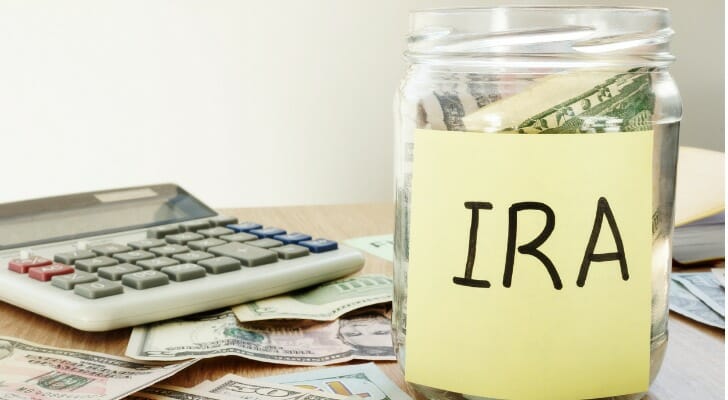
A Roth IRA affords some key tax benefits for savers, chiefly the ability to make 100% tax-free withdrawals in retirement. Typically, the scope of investments available through an IRA is determined by the company that holds your accounts. A self-directed Roth IRA, however, can offer more choices for building a portfolio.
Investing in a self-directed Roth IRA isn’t right for everyone and there are some important things to know before getting started. Specifically, investors need to be aware of the contribution limits for self-directed Roth IRAs, as well as who can contribute, what you can invest in and what rules govern your choice of investments. If you’re uncertain whether a self-directed Roth IRA is right for you, consider speaking with a financial advisor.
The Basics of a Self-Directed Roth IRA
A self-directed Roth IRA is an individual retirement account that offers you control over how your money is invested. These accounts are offered by brokerages, just like any other type of IRA. You choose which brokerage acts as a custodian for the account. Once you make the minimum opening deposit, if required, you can decide how your money is invested. This means that the brokerage acting as your custodian can not offer you any investment advice; you’re truly self-directing your account.
Self-directed Roth IRA accounts have all the features of regular Roth IRAs, with regard to how much you can contribute annually and how withdrawals are taxed. The difference is that a self-directed IRA gives you the freedom to greatly increase diversification in your portfolio by holding alternative investments like real estate, commodities, limited partnerships and other asset classes.
The most important details of a self-directed Roth IRA include:
- An annual contribution limit of $7,000 for 2024 ($8,000 if you’re 50 or older) and $6,500 for 2023 ($7,500 if you’re 50 or older).
- Contributions that are not tax-deductible
- Qualified withdrawals that are 100% tax-free
- Contributions that can be withdrawn at any time, with no tax penalty
- No required minimum distributions (RMDs) at age 73
Compared to a self-directed traditional IRA, a Roth IRA could be advantageous for someone who expects to be in a higher tax bracket at retirement. You’ll pay no tax on withdrawals beginning at age 59 1/2 or older and there’s no cutoff at which you have to begin taking money from your account. Of course, you won’t get a tax deduction for what you contribute the way you could with a traditional self-directed IRA, but that may be less important if you’re making contributions during the years when your income is lower.
Who Can Contribute to a Self-Directed Roth IRA?
The IRS sets rules on who can contribute to a Roth IRA, based on income. Those same rules carry over to self-directed Roth IRAs. For 2024, you can contribute up to the full annual limit if:
- You’re a single filer or head of household with a modified adjusted gross income (MAGI) of less than $146,000
- You’re a married couple filing jointly or qualifying widower with an MAGI of less than $230,000
For 2023, you can contribute up to the full annual limit if:
- You’re a single filer or head of household with a modified adjusted gross income (MAGI) of less than $138,000
- You’re a married couple filing jointly or qualifying widower with an MAGI of less than $218,000
Married couples filing separate returns for either 2024 or 2023 can make a partial contribution to a Roth IRA if their MAGI is less than $10,000. Contributions across all filing statuses phase out once the income for the year reaches a certain limit. If you’re eligible to contribute to a self-directed Roth IRA based on your income, the better question to ask may not be whether you can contribute, but whether you should.
According to Scott Butler, a financial planner at Klauenberg Retirement Solutions in Laurel, Maryland, a self-directed IRA might not be the best account for just anyone.
“This is definitely not something I would recommend to the average or casual investor,” Butler says. “With a self-directed IRA, there are more ways to make a mistake and some tax traps you can easily fall into.”
Understanding the unique tax rules that apply to self-directed Roth accounts can help you determine whether it’s the right strategy for your investments.
Self-Directed Roth IRA Tax Guidelines

There are two specific rules to know when investing in a self-directed Roth IRA. The first covers disqualified persons and the second covers prohibited transactions. These rules are designed to prevent investors from abusing self-directed accounts and their tax advantages.
What Are Disqualified Persons and Prohibited Transactions?
The disqualified person rule essentially says that certain people are not allowed to engage in prohibited transactions. A prohibited transaction is any improper use of your IRA by yourself or another disqualified person.
Prohibited transactions include:
- Lending money or extending credit
- Furnishing goods, services or facilities
- Selling, exchanging or leasing property
- Using or transferring income from the plan to a disqualified person
- Any act of a fiduciary dealing with your IRA money or assets in their own interest
- Any receipt of consideration by a fiduciary to their own account from anyone dealing with the IRA and its money or assets
A disqualified person includes:
- You and/or your spouse
- A beneficiary of the IRA
- Your descendants and their spouses
- Plan service providers
- Any company in which you own at least 50% of the voting stock
- A shareholder or partner in said company who owns 10% or more of its stock
For example, you couldn’t use your self-directed Roth IRA as collateral for a loan or use those funds to buy a piece of property for your own personal use. Violating this rule could cause your self-directed account to lose its tax-advantaged status.
What Can You Invest in With a Self-Directed Roth Account?
Within a typical Roth IRA, your investment choices may be limited to mutual funds, index funds, exchange-traded funds (ETFs) and bond funds. Individual stocks or bonds may also be an option, though those are less common.
With a self-directed Roth IRA, there’s much more variety. Some areas where you could invest your money in a self-directed account include:
- Real estate
- Private placements
- Tax liens
- Partnerships and franchises
- Precious metals
On the other hand, there are some investments you can’t own in a self-directed Roth IRA. Those include gems, stamps, collectibles, artwork, coins, rugs and antiques.
“Self–directed accounts are for risk-takers who are not satisfied with the ETFs and mutual funds that are offered through traditional custodians,” says Guy Baker, founder of Wealth Teams Alliance in Irvine, California. “They’re more interested in first trust deeds, real estate partnerships, real estate investment trusts and perhaps gold and other commodities. In some cases, you can buy stock in a closely held business that is not traded on the exchange.”
Being able to expand your investment options in a self-directed IRA can allow you to look beyond stocks and bonds. The potential downside, however, is that some of the things you may choose to invest in through a self-directed account could carry a higher degree of risk.
Bottom Line

A self-directed Roth IRA can open up new possibilities for investing, but it’s important to consider the pros and cons carefully. If you’re not well-versed in a certain type of investment, for example, or you’re unsure of the tax rules for prohibited transactions, you could do more harm than good in your portfolio. Before you dive in, take time to learn the finer points of self-directed investing and get help if you need it.
Tips for Retirement Planning
- A financial advisor can be a valuable resource as you plan for retirement. Finding a financial advisor doesn’t have to be hard. SmartAsset’s free tool matches you with up to three vetted financial advisors who serve your area, and you can have a free introductory call with your advisor matches to decide which one you feel is right for you. If you’re ready to find an advisor who can help you achieve your financial goals, get started now.
- If you want to set up and plan your retirement goals, SmartAsset’s retirement calculator can help you estimate how much you may need to save to retire comfortably.
- Another easy way to save for retirement is by taking advantage of employer 401(k) matching. SmartAsset’s 401(k) calculator can help you figure out how much you may have down the road based on your annual contribution and your employer’s matches.
Photo credit: ©iStock.com/designer491, ©iStock.com/shapecharge, ©iStock.com/AndreyPopov